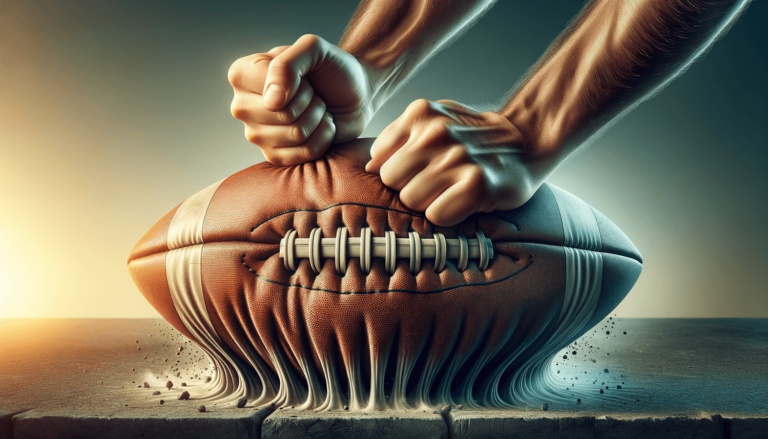
To deflate a football, insert a ball pump needle into the air valve, apply gentle pressure, and allow the air to escape. Remove the needle once the desired pressure is reached.
Why Deflate a Football
Deflating a football is sometimes necessary for storage, transportation, or adjusting air pressure for different playing conditions. Follow these simple steps to deflate a football safely and effectively.
Tools Needed
Before you begin, gather the following items:
- A ball pump needle (commonly comes with a hand pump)
- A ball pressure gauge (optional but recommended)
- A soft dry cloth or towel
Locate the Air Valve
Find the air valve on the football, which is a small rubber or plastic nozzle designed to receive air and release when needed. The air valve is generally located along the seam of the football.
Prepare the Football
Wipe the area around the air valve with a soft dry cloth or towel. This removes dirt and debris, ensuring a clean contact between the ball pump needle and valve.
Step-by-Step Deflating Process
- Insert the ball pump needle into the air valve. Wiggle it gently to establish a secure connection.
- Hold the football firmly with one hand and place the other hand on the needle for mild pressure.
- Press down on the needle to release the air and continue until the desired pressure is reached. Use a ball pressure gauge to check the pressure if necessary.
- Remove the needle from the valve carefully when finished. Store the football in a cool, dry place to prevent damage.
Important Tips and Precautions
Becoming familiar with these tips and precautions will help to ensure the safety of both the football and the user during the deflation process.
Choose the Right Needle
Not all ball pump needles are the same size or quality. If your needle doesn’t fit snugly, find one which does. Using the wrong size needle can damage the valve, leading to potential leaks and poor air retention.
Avoid Excessive Pressure
Applying too much pressure on the needle during deflation can damage the football’s bladder or valve. Use gentle, measured pressure to release air gradually, and always utilize a pressure gauge to avoid over-deflation.
Store Football Properly
Once deflated, store your football in a cool, dry location away from direct sunlight or extreme temperatures. This will prevent damage and ensure your football remains in optimal condition for future use.
Cleaning and Maintenance
A well-maintained football will last longer and perform more consistently. Here’s some advice to keep your deflated football in good shape.
Clean Exterior Regularly
Regularly clean the exterior of the football using a soft cloth and mild soapy water. This will remove dirt, sweat, and residue from the ball’s surface, preserving its grip and appearance.
Inspect the Valve
Periodically inspect the football’s valve for signs of damage or wear. Promptly replace or repair a faulty valve to avoid additional damage or rapid air loss during play.
Reinflate as Necessary
When it’s time to use your football again, follow the manufacturer’s inflation guidelines carefully. A properly inflated football offers better performance and safety during play.
Frequently Asked Questions
Here is a list of common questions and answers related to deflating a football, ensuring you have all the information needed for a successful process.
How do I know if my football needs deflation?
If your football feels overinflated, is difficult to grip, or bounces excessively when dropped from waist height, it may require deflation. Alternatively, if your football feels too soft or underinflated, it may need inflation. Always refer to the manufacturer’s guidelines for the optimal ball pressure.
What should I do if the air valve is damaged?
If your air valve is damaged, it may not hold air properly and may require repair or replacement. Contact the football manufacturer or a sports equipment store for advice on repairing or replacing the valve.
Can I use alternatives to a ball pump needle for deflation?
Using alternatives like paper clips, toothpicks, or safety pins can damage the valve and is not recommended. It’s best to use a proper ball pump needle designed specifically for deflating and inflating sports balls.
How much air should I let out of the football?
The amount of air you should release depends on your goal for deflation. For storage or transport, deflate the ball until slightly soft but still firm enough to maintain its shape. If you’re adjusting pressure for gameplay, use a pressure gauge and refer to the manufacturer’s instructions for the optimal pressure range.
Is it possible to over-deflate a football?
Yes, over-deflation can cause the internal bladder to crease or fold, leading to possible damage upon reinflation. To avoid this, deflate the football only to the point where it’s soft but retains its overall shape.
Featured Posts
- No pillar pages found.





